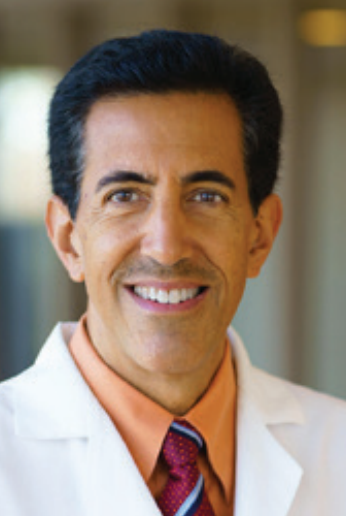ADD and ADHD in children: the answer is right in their nose
Dr. Peter J. Catalano writes about mouth breathing and how it can lead to consequences related to a child’s health, behavior, and intellectual development.

Drs. Peter J. Catalano and John Walker discuss the consequences of sleep-disordered breathing and how dentists can help
A better understanding of ADD and ADHD symptoms and a new way to reverse them has given new found hope to the parents of children who struggle with behavioral issues and learning disabilities in school and at home. The solution, according to recent medical research, is surprisingly simple and yet frustratingly elusive: healthy, unbroken sleep.
The key word in that phrase is “unbroken.” While parents do commonly strive to ensure that their children sleep for the recommended 8 to 10 hours each night, very few can attest to the real quality of that sleep. Increasing evidence is now coming to light that certain children with attention-related or behavioral disorders can be treated without medication. The real culprits behind their behavior? Interrupted sleep due to nasal obstruction.
The key to great sleep is healthy breathing through the nose. Not all breathing is equal. Many children with narrow or blocked nasal passages are forced to breathe through their mouths all or part of the time. For many, the nasal obstruction only occurs at night. When the children lie down and fall asleep, their nasal tissues swell and their throat muscles relax making an already small airway even tighter. They don’t get the oxygen they need and effectively start to suffocate. The body goes into panic mode and partially reawakens not enough for the child to regain consciousness, but just enough for the throat muscles to reopen the airway.
The issue lies in the body’s need to arouse itself repeatedly throughout the night. When a sleeping child’s body reawakens, the child then gets the oxygen they need. The reawakening occurs in response to adrenaline, the body’s natural stimulant that can be secreted by our adrenal glands numerous times an hour in order to keep the child breathing. The child is forced into something called “sympathetic dystrophy,” which basically means that they become over stimulated. Hours of such chemical stimulation during sleep leads to an anxious, hyperactive, unfocused child during the day. This is why we commonly see young patients filled with nervous energy. Parents tell us that their son or daughter just can’t keep still. That’s the adrenaline at work; the repeated awakenings also cause the child to miss out on a complete sleep cycle. This happens over and over all night long. By morning, the child has failed to reach the deepest cycle of sleep, and over the years, this can have catastrophic consequences on behavior, physical health, and intellectual development.
ADD, ADHD, and the risk of misdiagnosis
This chronic sleep problem, known in the medical community as “Sleep-Disordered Breathing” (SDB), has begun to receive more and more attention in recent years as the number of ADD and ADHD diagnoses have skyrocketed. The symptoms of SDB in children are one cause of ADD and ADHD, and it is currently unclear how many children have sleep deprivation. For example, SDB symptoms can include problems such as hyperactivity, shorter attention spans, unexplained anger or depression, and poor school performance — all traditional hallmarks of ADD or ADHD. Children suffering from SDB may also exhibit other easily overlooked symptoms, including snoring, bed wetting, slouched posture, poor appetite, messy eating habits, headaches, and frequent open-mouth breathing.
Many children’s behavior-related struggles turn out to be a direct result of ongoing sleep deprivation. It is important to note that tiredness can also be a symptom of poor sleep, but it is mostly limited to older children and adults.
As years of improper sleep progress, a child’s symptoms can also begin to reveal more lasting damage. The deepest cycles of sleep are when a child’s body develops physically, emotionally, and intellectually. If enough time passes without healthy sleep, you can see issues like delayed cognitive development, stunted physical growth, and abnormal upper and lower jaw development. The latter ultimately leads to orthodontic and dental problems.
The surprising link between sleep and dentistry
New research coming out about sleep deprivation has emerged, surprisingly, from the field of dentistry or more specifically, from a dental subfield called “Airway Orthodontics.” Instead of simply correcting crooked teeth with braces and sending patients on their way, more and more orthodontists have begun to ask a previously unconsidered question: Why are teeth getting crooked in the first place? The answer, it turns out, is the same root cause behind sleepless nights: mouth breathing brought on by a blocked nasal passage. In fact, studies show that over 90% of children with crooked teeth, teeth-grinding issues, or poor jaw alignment also have compromised nasal breathing.
You really cannot overestimate the impact that nasal breathing has on facial development. Constant airflow through the mouth puts inward pressure on the jaw and teeth. This keeps the jaw from growing properly. Eventually, we end up with a child whose narrow jaw and face can’t hold all their adult teeth. From there, you can suffer from all types of orthodontic problems.
What does a narrow jaw have to do with sleep, though? Your jaw affects the size of your airway passage; thus if your jaw doesn’t develop to its proper width, then your airway is going to be too small for healthy breathing, especially when you lie down at night. Patients usually begin with a blocked nose and start mouth breathing at a young age (i.e., 1 year to 4 years old). By the time they require braces, they’ve effectively been damaging their bodies and their airway for years.
Finding a solution that’s right on the nose
The vast majority of children with SDB have nasal airway obstruction that results in mouth breathing that may be present day and night, or just when the child lies down. The latter occurs as fluid that had been drained out of the nasal tissues by gravity during the day, re-enters the nasal tissues when the child lies down and loses the benefit of gravity.
We are not supposed to breathe through our mouths at any time. Our noses have evolved to do a better job of breathing in almost every way from filtering impurities out of the air you breathe, to warming and humidifying the air for your body, to giving you a sense of smell. But when a child can’t breathe through their nose, they have no choice but to resort to mouth-breathing instead. From there, all sorts of problems arise.
The first step in helping a child, therefore, is to identify and correct any blockage in the nose. Possible reasons for nasal obstruction include anatomical deformities, septal deviations, enlarged septal swell bodies and/or turbinates, enlarged adenoids, or environmental allergies. It’s not uncommon for orthodontic patients to consult with other specialists depending on what the dentist sees during their exam and sinus/airway CT scan. The latter is now commonplace in airway orthodontics. If the orthodontists see nasal and/or sinus problems, or large adenoids or tonsils, they will recommend an otolaryngology consult.
The correction of nasal obstruction in a child can be challenging due to the small size of the nasal passages and the severity of the intranasal deformities encountered. In addition, many ENT doctors simply focus on removing the child’s adenoids and/or tonsils in an attempt to improve their breathing during sleep. However, studies have shown that only 1/3 of children with SDB are cured after T&A, with the rest requiring surgery on their nasal passages. We have pioneered many of the procedures to correct nasal obstruction using minimally invasive techniques that allow children and adults to return to school or work within 24 hours of surgery. There is no nasal packing or external evidence of surgery, and most children do not even require Tylenol after surgery. This newly developed ability to correct nasal obstruction in children, coupled with the breakthrough in understanding how ADD and ADHD develop from poor sleep, have revolutionized our treatment of this condition.
After healthy nasal breathing gets restored, the orthodontist then begins the second important aspect of treatment: ensuring proper jaw growth. The ideal time to help a child is before their jaw has finished growing. This allows the use of non-surgical and non-invasive methods to guide the jaw growth natural and wide enough to promote a healthy-sized airway.
Typical orthodontists don’t see a child until age 11 or 12, when their facial growth is already 90% complete. Airway Orthodontists argue that this is far too late. Even a 4-year-old has already completed 60% of their facial growth, thus the sooner a child can be seen, the easier it will be on them. However, this doesn’t mean hope is lost for a preteen, teenager, or even an adult with SDB. It’s never too late to address a breathing problem; it just may get more difficult to correct, but there are still treatment options.
The parent’s role in healthy breathing
While SDB has begun to receive more attention recently, only a small percentage of pediatric doctors are able to recognize the symptoms. We have amazing pediatric doctors out there taking care of children, but unfortunately they just haven’t been made aware of the opportunity to correct SDB through minimally invasive nasal surgery and proper orthodontic care. You combine that with the fact that SDB produces ADD or ADHD symptoms, and you end up with great doctors who are simply misdiagnosing some of their patients.
What can parents do in the meantime? “Keep an eye out for sleep deprivation symptoms in your child, and don’t be afraid to seek out a second or third opinion from an Airway Orthodontist or a pediatrician who keeps up with recent medical research on childhood sleep, especially if your child has been diagnosed with ADD or ADHD. There is a chance that your child’s issues are, in fact, reversible without needing medication or therapy. The improvements in these patients can be nothing short of life changing.
Republished with permission: Catalano PJ, Walker J. ADD & ADHD in Children: The Answer is Right in Their Nose. Am J Otolaryngol Head Neck Surg. 2018; 1(5): 1025.
 Peter J. Catalano, MD, FACS, FARS, is the Chief of Otolaryngology at St. Elizabeth’s Medical Center and a Professor of Otolaryngology at Tufts University School of Medicine. He is a native of New York and graduated from Mount Sinai School of Medicine whereupon he completed his residency training in Surgery at Cedars-Sinai Medical Center (Los Angeles, CA) and Otolaryngology at Mount Sinai Medical Center (New York, NY). He is board certified in Otolaryngology. He has served as Program Director since the Rhinology program’s inception while helping innovate many new technologies in the field of Otolaryngology. He has lectured throughout the world and published numerous journal articles and book chapters on many areas of Minimally-Invasive Rhinologic Surgery. His practice interests additionally include Pediatric Rhinology and Sleep Surgery.
Peter J. Catalano, MD, FACS, FARS, is the Chief of Otolaryngology at St. Elizabeth’s Medical Center and a Professor of Otolaryngology at Tufts University School of Medicine. He is a native of New York and graduated from Mount Sinai School of Medicine whereupon he completed his residency training in Surgery at Cedars-Sinai Medical Center (Los Angeles, CA) and Otolaryngology at Mount Sinai Medical Center (New York, NY). He is board certified in Otolaryngology. He has served as Program Director since the Rhinology program’s inception while helping innovate many new technologies in the field of Otolaryngology. He has lectured throughout the world and published numerous journal articles and book chapters on many areas of Minimally-Invasive Rhinologic Surgery. His practice interests additionally include Pediatric Rhinology and Sleep Surgery.
John Walker, DMD, is an instructor of Orthodontics & Dentofacial Orthopedics at Boston University Henry M. Goldman School of Dental Medicine. He recieved his DMD from the College of Medicine and Dentistry of New Jersey in 1976 and his CAGS (Orthodontics) from Boston University School of Dental Medicine in 1978.
Read more about the problems of mouth breathing and the benefits of nose breathing in “Healthy Cells, Healthy Brain: Nose Breathing is Fundamental,” in our sister publication, Dental Sleep Practice. https://dentalsleeppractice.com/healthy-cells-healthy-brain-nose-breathing-is-fundamental/
